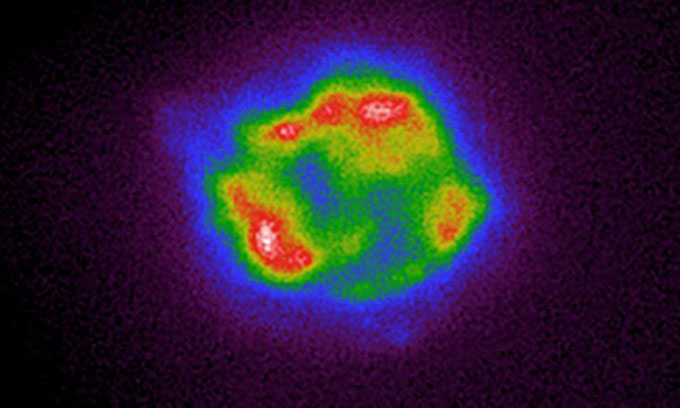The new “X-ray eye” on the IXPE spacecraft allows astronomers to observe the most extreme objects like Cassiopeia A.

X-ray image from IXPE of the supernova remnant Cassiopeia A. (Image: NASA).
Just over two months after its launch into space, NASA’s X-ray Polarimetry Explorer (IXPE) has sent back its first images to Earth, providing a striking new view of Cassiopeia A, the famous remnant of a supernova or exploding star located about 11,000 light-years from Earth.
The image, released by NASA on February 14, shows the intensity of X-rays emitted from Cassiopeia A, with cool purple, blue, red, and white colors corresponding to increasing brightness.
When combined with data from the Chandra X-ray Observatory in orbit, the glowing purple gas clouds enveloping the remnant of the exploded star stand out more than ever. These clouds are created when shock waves from the explosion heat the surrounding gas to extremely high temperatures.
The data collected by IXPE on Cassiopeia A may help scientists measure how the degree of polarization changes across the remnant.

Composite image of Cassiopeia A, combining IXPE X-ray data with observations from the Chandra X-ray Observatory. (Image: NASA).
The IXPE spacecraft, a collaborative project between NASA and the Italian Space Agency, is equipped with three identical telescopes. Its mission is to provide new insights into the most extreme objects in the universe, such as supernovae, black holes, and neutron stars.
X-rays are high-energy light waves produced under extreme conditions. In space, these conditions include strong magnetic fields, collisions between objects, explosions, high temperatures, and rapid rotation.
X-ray light reaching Earth is blocked by the atmosphere. That is why scientists rely on X-ray telescopes to observe them in space.
Using IXPE to study the polarization of cosmic X-rays can help scientists gain a better understanding of the remnants of exploded stars, such as black holes and neutron stars, as well as their environments and how they produce X-rays. Exploring these extreme objects may also help answer larger questions about physics.


















































